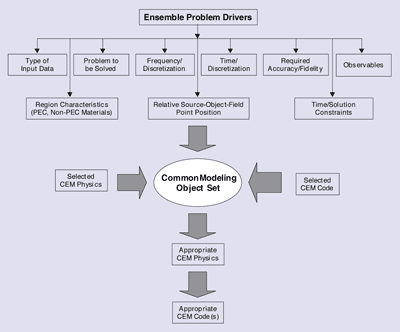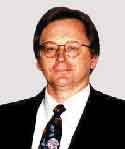
 |
EMC Standards Activities |
Don Heirman, Associate Editor |
The IEEE Standards Association Board recently approved a new project (P1597.1 and P1597.2) for our standards development committee that will take us into a totally new standards arena-that of computational electromagnetic computer modeling! Not only will our committee devote its effort only on practical measurement techniques and the necessary instrumentation, but it will now bring in the modeling aspects which is the forte of our Society’s Technical Committee TC-9. TC-9 by the way is the co-sponsor of this standards work. I want to particularly thank Andy Drozd who is the project leader and an enthusiastic missionary for this project. That is why he has graciously agreed to write this article for my column. Please read this from start to finish and if interested in participating, contact Andy without delay so you can be at the start of this exciting work! Now is the time!
The IEEE EMC Society’s Standards Development Committee (SDCom), Chaired by Stephen Berger, is sponsoring the development of a formal standard and recommended practice applied to computational electromagnetics (CEM) computer modeling and simulation (M&S). Although this is new territory for the SDCom, there is a great deal of interest and support behind the idea of a CEM standard. However, the idea is not a new one. In fact, the need for such was realized over 30 years ago at a time when the development and use of computer tools for electromagnetics applications was emerging and just beginning to gain momentum. This was influenced by several factors: (a) the growing complexity and sophistication of military and commercial systems designs; (b) achieving requirements for a balanced, cost-effective E3 program in which computer analysis could effectively complement measurements; and (c) providing a means of developing consistent models and benchmarks to support life cycle EMC code and measurement validations of actual systems. Important technological advancements in computer hardware and use of structured code only accelerated the arrival of CEM technologies and applications, as we know them today. The fast track CEM M&S trend continues today and will continue to grow as we further enter the age of high performance computing. This encompasses a broad range of applications such as analyzing printed circuit board radiated and conducted emissions/immunity, assessing system-level EMC, predicting the radar cross section (RCS) of complex structures, and automated target recognition (ATR) and imaging simulations.
The central issue is that there is a lack of well-defined methodologies to achieve code-to-code or even simulation-to-measurement validations within a consistent level of accuracy. The standard and recommended practice are expected to address these concerns and provide a method for validating CEM codes and models.
There are both overt and subtle differences among CEM codes due to their underlying physics, mathematical basis functions, numerical solution methods, associated precision, and the building blocks (primitives) that are used to create models and analyze them. Although all CEM codes have their basis in Maxwell’s equations of one form or another, their rate of convergence and “accuracy” compared to known results depend upon how the physics equations are cast (e.g., method of moments, finite differences, etc.), what numerical solver approach is used (full or partial wave, non-matrix, etc.), inherent modeling limitations, built-in approximations, and so forth. The physics formalism, available modeling primitives (canonical surface objects, wires, patches, facets, etc.), analysis frequency, and time or mesh discretization further conspire to affect accuracy, solution convergence, and overall validity of the computer model. Here, we have just scratched the surface for there are even subtler, innocuous issues that affect the way the codes operate and how or even if they can be validly compared.
What have not been fully appreciated are the issues of model accuracy, convergence,
and code validity. Concerns immediately arise when the results of predictions
using one type of CEM code do not favorably or consistently agree with the results
of other codes of comparable type or against measurement benchmarks. Oftentimes,
one observes clear differences among analytically based results over certain
frequency regions and for certain simulation states. Significant deviations
between analytical and empirical methods have been recorded. Differences are
not unexpected, but the degree of disparity in certain cases cannot be readily
explained nor easily discounted which leads one to ask the question, “...Which
result is correct?”
While analysts may argue in favor of a given modeling approach, simulation technique,
or use of a particular CEM code, there is no consistent methodology for comparing
results among codes or against empirically-based methods in a truly valid, objective
way. If a methodology exists, it does not appear to be universally practiced.
Furthermore, it is often difficult if not impractical to compare the results of certain codes even though they are based on Maxwell’s equations. Of course, some exceptions to this can be cited, in particular, when one considers grouping and comparing the results of “similar” codes determined by their physics, solution methods, and modeling element domains. However, significant disparities can even occur between “similar” codes, so oftentimes we are forced to go back to square one regarding the fundamental question.
Is CEM an art or a science? One can make the case that it is nearly an even mix of both. The objective should be to emphasize the scientific aspects of modeling and simulation to ensure objectivity as a function of the overarching approach (modeling primitives, physics, problem to be solved) and the underlying scheme (physics, solver method, computation of observables). Obviously, the types of physics and solution method we use for a given problem and the desired observables are central to the issue.
No one will dispute the scientific basis and technical merit of CEM for solving complex problems. However, CEM is also something of an art from the perspective of the (expert) analyst. In practice, the expert is familiar with the code and the physics (i.e., the “canvas”) and is proficient in applying the modeling tools and simulation/processing techniques (i.e., the brushes and colors). Unfortunately, this is also the root of the problem in that the process can naturally introduce a certain degree of subjectivism and uncertainty. What seems appropriate to one expert analyst may be inconsistent or inappropriate to another, yet both may claim to be “correct” based on their preferred tools and applied techniques. Even though both approaches may be generally correct for a given problem, results may differ. This again begs the question, “...Which result is correct?”
In effect, we need to eliminate (or at least significantly reduce) potential uncertainty in the modeling and simulation process. The electromagnetic community clearly needs a benchmark methodology i.e., a CEM standard that can be used to assure consistency for objective modeling and simulation validations.
To achieve this we must rely on CEM experts as well as today’s software
savvy engineers and computer scientists familiar with the latest computerized
simulation and hardware technologies. One of the goals should be to determine
how generalized computer models are represented or generated, and how they can
be effectively converted into efficient CEM models. One application that the
DoD’s High Performance Computing Modernization Program has investigated
involves deriving high-fidelity CEM models from CAD databases. This implies
an understanding of the typical ways to represent models possibly using a common
language or via a universal set of descriptors, and then specifying methods
to assure model and code validation utilizing these data.
 |
Figure 1. Ensemble Problem Drivers and Their Influence on the Selection of Appropriate CEM Physics and Codes for Validation Purposes. |
To properly develop the standard and recommended practices, a balanced cross section of the CEM community must be tapped. This includes the Applied Computational Electromagnetics Society (ACES) community, the IEEE EMC Society’s TC-9 Committee on CEM (co-sponsors of the proposed standard), the IEEE’s Antennas and Propagation, Microwave Theory and Technique, and Magnetics Societies Electromagnetic Code Consortium, and other international groups concerned with advancing and applying CEM technologies. Thinking somewhat “outside the box“, we can also learn a great deal about relevant modeling and simulation technologies and techniques from the world of consumer video games.
There are two separate projects established to address the above concerns, issues, and goals as follows.
The scope of this four-year project is to develop a standard for the validation of CEM computer modeling and simulation codes in differing applications. The standard will provide a basis for analytical and empirical validation of CEM codes and configurations. Several key areas will be addressed, including:
Validation by use of canonical models - This refers to the specification of canonical modeling elements (primitives) as a function of ensemble parameters (frequency, desired accuracy or fidelity, physics and numerical solution method, etc.). This is illustrated in Figure 1.
Validation by simulation versus measurement - Included in the validations
will be associated model-based parameter estimation (model- versus measurement-driven
uncertainty estimates).
The purpose of this project is to guide the validation of CEM application models. The standard is intended to address concerns over the lack of well-defined methodologies to achieve code-to-code or simulation-to-measurement validations within a consistent level of accuracy, and provide a method for validating CEM codes and models. An additional aspect of computer modeling and simulation for CEM considered here is aimed at perhaps studying radiation hazards and related safety issues.
Comparable work has been accomplished and continues to mature on behalf of other collaborative engineering disciplines such as computational fluid dynamics, thermal and structural/ mechanical engineering. These will also be looked at for guidance and the development of a draft standard for CEM.
The scope of this four-year project is to develop a recommended practice for use in CEM computer M&S applications to guide the EMC design of printed circuit boards to large, complex systems. Areas to be addressed include:
General guidelines for creating CEM models.
Development of modeling methodologies for small-to-large scale “canonical“ systems, platforms or composite models.
Methodologies for developing and applying collaborative, multi-disciplinary engineering modeling schemes.
Computation of uncertainty for modeling applications.
This recommended practice will aid modelers and analysts in the selection and application of appropriate modeling and simulation methodologies, physics, and solution techniques to achieve accurate results and to complement measurements and EMC design tasks for a wide range of problems. As with its counterpart standard, a significant aspect of CEM computer modeling and simulation for electromagentic effects analyses could be used to target the study of radiation hazards and related safety issues.
This work will build upon prior analytical studies and research conducted by academic, government, commercial and professional institutions and consortia [1, 2]. These include studies on the modeling and simulation of multi-disciplinary engineering problems pertaining to fluid dynamics, laminar flow, structural and thermal engineering applications [3]. Another key area of study is the development and use of analytical and measurement benchmarks.
The first ad hoc Working Group meeting was held in conjunction with the 2001 IEEE International Symposium on EMC in Montréal. There were 17 attendees representing government (»25%), industry (»50%), and academia (»25%). From these, the estimated user/producer/general interest profile was: 100% (code users), 50% (code producers/developers), and 100% (general and materielly interested organizations). This represents a reasonably balanced balloting group.
The Working Group plans to meet two to three times per year in conjunction with current EMC symposia, conferences, or review meetings. The Working Group officers are Andy Drozd of ANDRO Computational Solutions, Rome, New York (Chair), Dr. Bruce Archambeault of IBM, Research Triangle Park, North Carolina (Vice Chair), and Dr. Maqsood Mohd of Sverdrup Technology, Eglin AFB, Florida (Secretary).
The progress on the development of these standards and guidelines will be reported upon periodically. For more information or to provide comments, please contact Andy Drozd at (315) 334-1163 or via email at andro1@aol.com.
Archambeault and J. Drewniak, “EMI Model Validation and Standard Challenge Problems”, https://aces.ee.olemiss.edu/.
Electromagnetic Code Consortium Web Site https://www.asc.hpc.mil/PET/CEA/emcc/benchmark/benchmark.html
CGNS, The CFD General Notation System Overview and Entry-Level Document, CGNS Project Group, 15 May 1998.
 |
Andrew Drozd is President and Chief Scientist of ANDRO Compu-tational Solutions, Beeches Technical Campus in Rome, NY. ANDRO is a company dedicated to the research, development, application and training of computational electromagnetics (CEM) tools for EMC and electromagnetic environmental effects (E3) analyses. He has over 26 years of experience in electromagnetics technologies primarily for the modeling and analysis of E3 effects, environments, and responses for government and commercial systems. His responsibilities include: systems engineering; EMC computer modeling, simulation and analysis; exploitation of innovative, expert system technologies for CEM and EMC analytical applications; and EMC laboratory testing support including the design and conduct of experiments. He may be contacted at andro1@aol.com. EMC |
© Copyright 2001, IEEE. Terms
& Conditions. Privacy
& Security